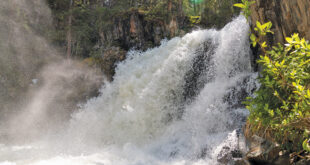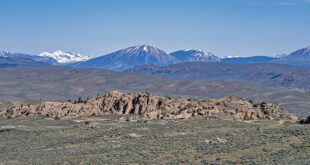In an ideal world, the property at the top of Elk Avenue would be operating as its traditional use as a working sawmill. All Crested Butte’s local workers would live within 500 yards of their part-time jobs that funded them the freedom to ski and ride and play. The 13-acre Whetstone parcel south of CB would be a scenic meadow filled with wildlife.
Alas, that ideal is not based in current reality. The reality is money, waves of new people who appreciate resort amenities and gentrification of an old mining town are shifting the old uses to higher end roles like nice homes and affluent businesses. Money is now a major factor on what town will look like and the working class requires specific places and special effort to keep them living in the North Valley.
That is where decisions made today to guide growth through smart direction and compromise come in.
At Monday’s appeal hearing over a proposed minor subdivision at the top of Elk Avenue, Crested Butte planning commissioner and councilmember Jason MacMillan said he couldn’t say in five years whether someone would have the money needed to build a house on top of the hill.
He was referring to the weird parcel of land located looker’s right at the very top of Elk Avenue that used to be a quarry and sawmill. MacMillan was debating with some of his colleagues whether someone would have the means to build a house on what looks like an unbuildable hillside but that would have a prime perch overlooking town while being smack dab in town. Lord knows it would take some major engineering to accomplish and that takes deep pockets. But I think I can answer Jason’s question: No — it won’t be five years when someone with such capital comes to town. They got here yesterday.
Whether a person with that much money wants to spend it for that site is another matter. But this isn’t the 1990s where the wealthiest of CBers might not have the bank account to pay for the engineering, lawyers and construction that would need to go into such a build, or when CB lovers would understand such a decision was not best for the place they wanted to be part of. Learning from our sister resorts ahead of our curve, the new reality is that there are plenty of people of such means here now and someone with an attitude of owning such a unique ‘look at me’ second (or fifth) home would not be surprising these days.
Not to go all softhearted on developers, but it was disappointing to see their appeal fail with CB elected officials when the proponents were suggesting two houses on six lots and a guarantee to keep the hillside site line clear of development in what could be a very visible spot overlooking the heart of CB. It seemed a reasonable compromise that provided some certainty in a highly visible spot and believe it or not Don Quixote, compromise is not always a bad word. You don’t have to tilt at every windmill if you can grab a win without a fight. The developers and town staff spent 20 months working to find a workable compromise solution and BOZAR and the elected planning commission (town council) were split over the proposed solution, so it was rejected.
Now, I went by the lot after the meeting was held and to say it would be a tricky place to build is an understatement. Nothing looks like it would be easy to do on that piece of property. I have no idea how someone could build a house and get in the front door if they built up on the hill. Maybe nothing happens there, ever. But as has been seen in other resort towns, anything is possible — with enough money. It is a matter of engineering, concrete, effective attorneys and creative architecture, all of which would cost bank. Thank goodness CB isn’t attracting people with money!
Which leads me back to the idea of Whetstone, compromise and certainty…
The proposed Whetstone affordable housing project had a public hearing last week and unlike the Corner at Brush Creek process, this one started with a lot of community outreach and dialogue by the county (kudos!) that resulted in goals for a livable neighborhood full of workers. Not a single person at the public hearing said the location was not suitable for workforce housing. To get to the proposed sketch plan design, various compromises were achieved over months of outreach and discussion. The number of apartments versus duplexes, the amount of green space, the parking allocation, the need for workable transit access, all came about through lots of discussion and basically compromise.
More potential compromise could come as planners figure out how close to the highway the major apartment buildings should be to retain green space and make future residents comfortable without urbanizing the entrance to CB. How Crested Butte might provide utilities to Whetstone will include compromise with what conditions are included. How best to respect and coordinate with adjacent neighbors will be a result of compromise. But the bottom line at that public hearing was that even when someone brought up a point of concern, they all started by saying they supported the spirit of the project.
Time too has softened opposition to large numbers of new full-time residents being situated a few miles from CB. Reality vs idealism. Compromise on how best to accommodate the future neighborhood has resulted in new ideas like a roundabout on the highway. Discussions over unavoidable impacts of hundreds of new full-timers will include more dialogue and compromise as the process continues. But the bottom line is that being willing to move a little to the left or move a little to the right to improve the overall community makeup will result in a better place for the future of the North Valley as it changes so fast. Guiding growth now and not just saying no will have the greatest impact.
Which brings me back to the Elk Avenue parcel. When developers can whittle down an agreement with town staff that protects an in-town viewshed while dropping the (normal) density on a piece of property, it seems reasonable to strike a deal. You can tilt at every windmill that appears in the North Valley or you can accomplish some reasonable protections that will matter to some future Crested Butte.
Who is to say whether someone will be willing to spend seven or eight figures for an opulent house perched at the top of Elk Avenue in five years? I’m pretty sure the money part of the equation already exists here, so when a chance to stop that perch possibility came up but was rejected, that was a bit disappointing.
Compromise is not always a bad word. That is how government officials can guide the direction of what is to come with some certainty. The Whetstone process is a good example of that. The decision for the top of Elk Avenue is not.
—Mark Reaman
 The Crested Butte News Serving the Gunnison Valley since 1999
The Crested Butte News Serving the Gunnison Valley since 1999






